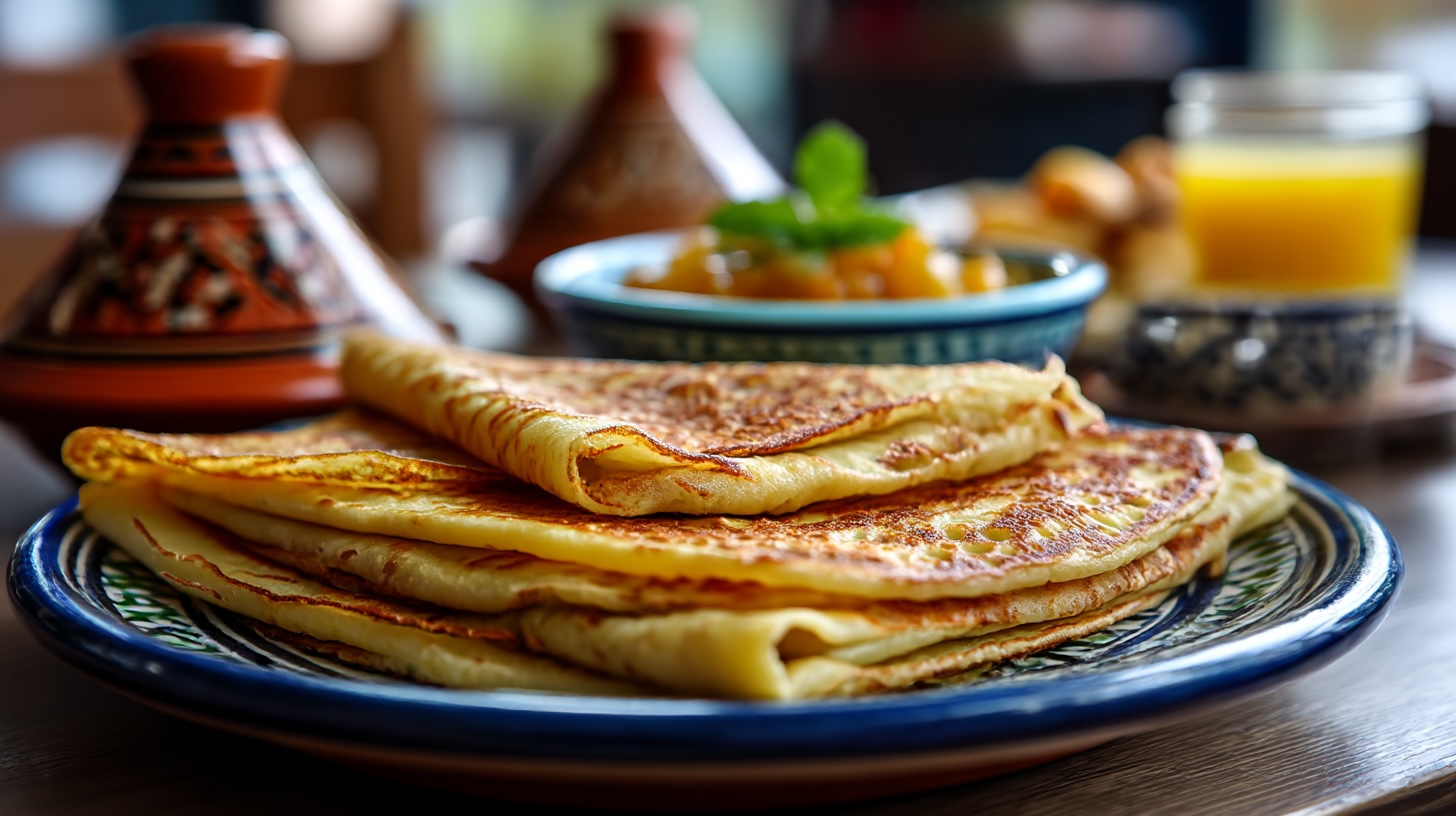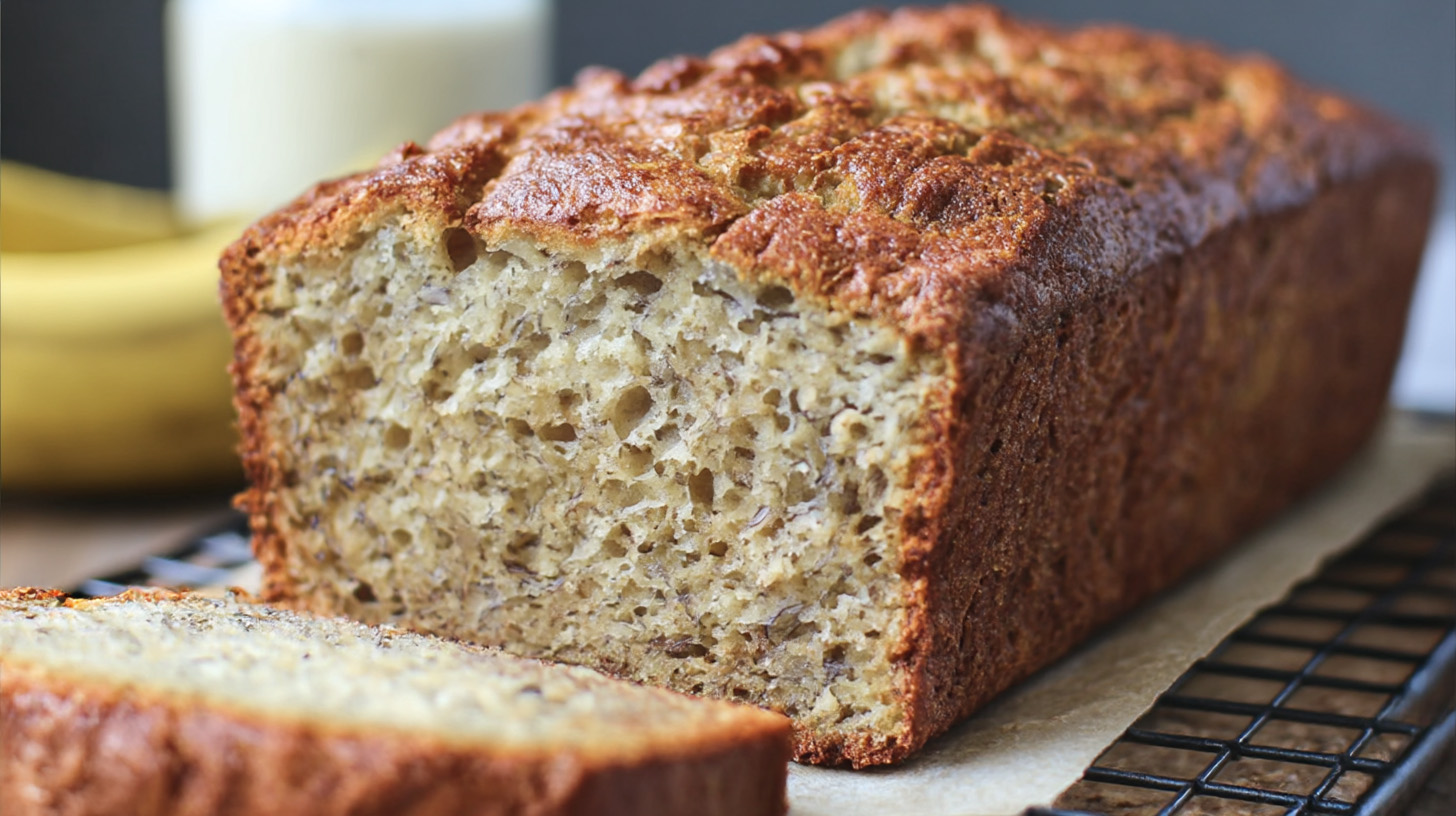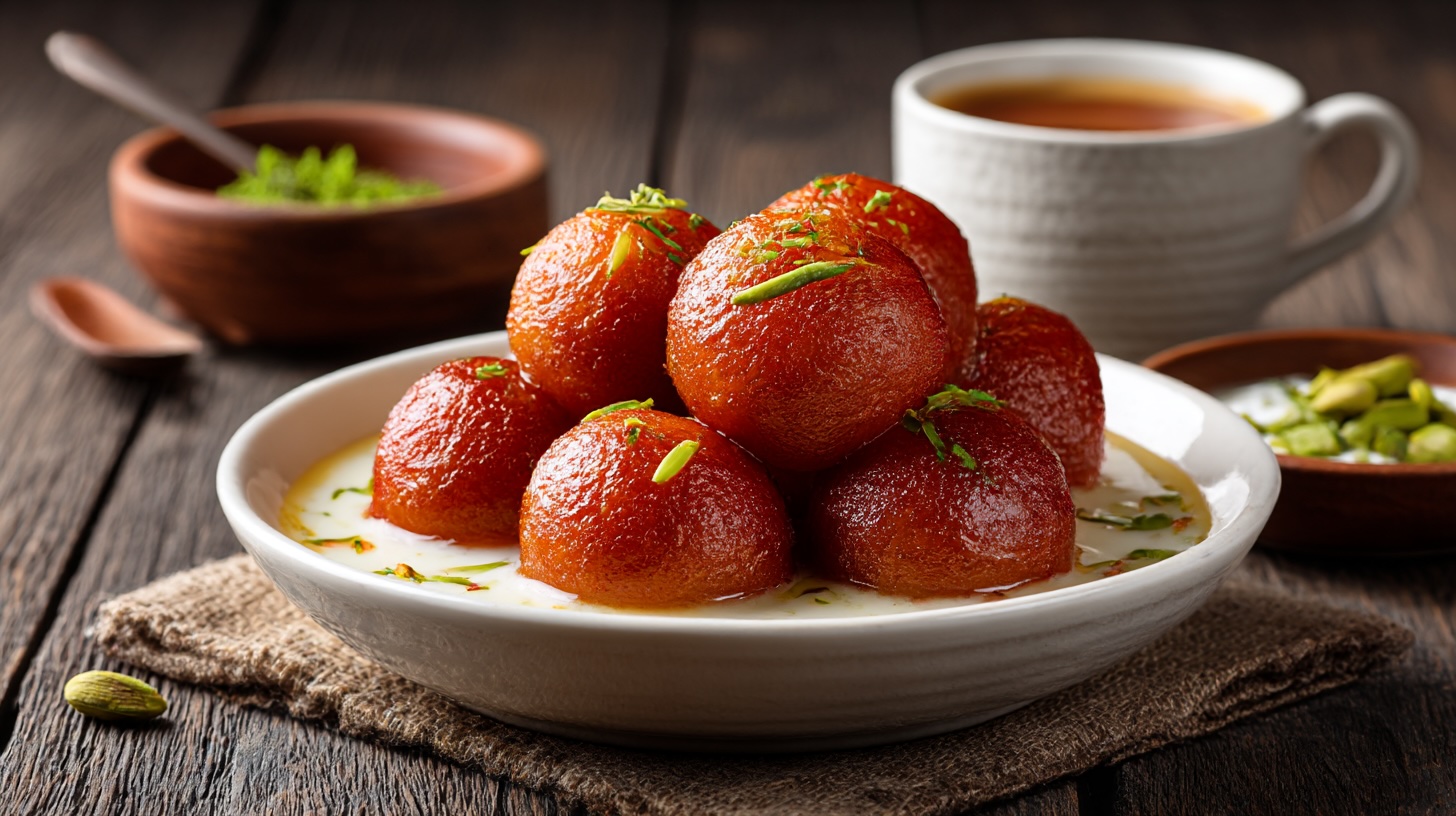Mofletta
If you ever find yourself in a Moroccan Jewish home on the evening after Passover ends, you might encounter something that feels like the ultimate cheat day after eight days of matzo monotony: a warm, chewy, buttery crepe called mofletta. It doesn’t just arrive quietly. No, it comes sizzling off the pan, stacked like golden pancakes, and slathered with honey, jam, or butter until your fingers are deliciously sticky and your inner carb-deprived soul sings.
Mofletta is the edible headliner of Mimouna, a post-Passover celebration observed primarily by Jews of Moroccan and North African descent. While the Ashkenazi world may be busy packing away the last box of matzo meal and swearing off brisket for a month, Moroccan Jews are busy whipping up dough, inviting the neighbours, and turning the dining room into a sweet-scented soirée.
Let’s get one thing straight: this is not a pancake. Nor is it a crêpe, at least not in the demure Parisian sense. Mofletta is a rebellious cousin of both, puffier than a crêpe, thinner than a naan, with the elastic charm of something that has absolutely no interest in staying dignified. It is meant to be eaten hot, greasy, and with reckless abandon.
Where did it come from? Morocco, obviously. Specifically, from the vibrant Jewish communities that once flourished in cities like Fez, Marrakesh, and Casablanca. Before the large-scale migration to Israel in the mid-20th century, these communities had developed a rich culinary culture that married North African spices with Jewish traditions. Mimouna itself is a unique Moroccan Jewish invention, a holiday of abundance and hospitality. The moment the clock strikes the end of Passover, out comes the flour, and within hours, mofletta is on every tray and plate.
It’s not a solo act either. Mofletta is usually accompanied by a parade of sweets, nuts, dates, butter, and honeycomb. The idea is to symbolise prosperity and happiness, which is very difficult to fake when your mouth is full of sugar-soaked bread.
Mimouna, for the uninitiated, feels like a magical collision between a religious release and a street party. It began as a modest family tradition but has since gone full public holiday mode in Israel, complete with politicians crashing Mimouna parties in the hope of catching some flaky goodwill (and maybe a few votes).
What makes mofletta special isn’t just its role as a festive food. It’s the ritual of making it: a simple dough, no yeast, no time for pretension, just flour, water, salt, and a dash of oil. It is rolled thin and fried quickly on a hot skillet, with each new mofletta layered directly atop the previous one, absorbing all its buttery, golden glory. By the time you reach the tenth layer, the bottom one is like a wise old crepe, thickened with experience and a bit of scorched character. The top one? Still naive, still perfect.
And let’s talk about the frying. Mofletta is cooked in a stack. Not one at a time like your sad Saturday pancakes. No, here, one crepe is fried, then another is slapped on top and cooked, and then another, creating a kind of steamy, buttery vertical bakery. The result is hypnotically good: warm, soft layers with a slightly crisped edge and a sheen of melted butter. Each one tastes like the echo of the one before it.
Now, mofletta doesn’t bother with toppings so much as it cavorts with them. Honey and butter are traditional lovers, but you’ll often find jam, Nutella, even a cheeky bit of halva paste entering the equation. Some might argue about authenticity, but honestly, once you’re rolling hot flatbreads in sugar at midnight, you’re not exactly operating under strict culinary laws.
As for drinks, go simple. Sweet mint tea if you want to stay on theme. Or even a little arak if the vibe is festive enough and no one’s watching. The sweetness of the mofletta pairs wonderfully with that aniseed hit. If you’re trying to be classy (good luck), a chilled Muscat or a semi-sparkling Moscato will echo the dessert vibes while cutting the richness.
Now, let’s say you want to go all in. What else should be on your Mimouna table? Look for zaben (egg and milk-based nougat), moufleta’s quirky cousin known as “sfenj” (a kind of Moroccan doughnut), dried fruits, nuts, and little decorative candies. It’s a bit of a sugar-bomb, but hey, after Passover, all bets are off.
Health-wise? Well, let’s not pretend this is wellness food. It’s flour, fried in oil, rubbed with butter, and doused in sugar. But mentally? Emotionally? Spiritually? Mofletta is medicine. It’s the bread of freedom, in the very literal sense, and it carries with it all the warmth of tradition, family, and that slightly manic joy that comes from having been carb-deprived for over a week.
If you’re outside Israel or Morocco, where do you find mofletta? The short answer: you make it yourself. If you have any Moroccan Jewish friends, get yourself invited. If not, it’s time to become that friend who brings mofletta to brunch and blows everyone’s mind. Jewish bakeries might have it post-Passover, but it’s rare. Like many great culinary experiences, this one happens at home, preferably while wearing socks on a tiled kitchen floor and swearing about the frying pan being too hot.
Ready to try it? Here comes the
Mofletta recipe.
You’ll need:
– 4 cups of plain flour
– 1 teaspoon of salt
– 1 and ½ cups of lukewarm water (add more if needed)
– 1 tablespoon of sugar (optional)
– Vegetable oil for frying and shaping
– Butter, honey, jam for serving
In a large bowl, mix flour, salt, and sugar (if using). Slowly add water and knead until a smooth, elastic dough forms. It should not be sticky but should be soft and pliable. Let it rest for 30 minutes, covered with a damp cloth.
Now, divide the dough into golf ball-sized portions. Coat your hands with oil and shape each piece into a smooth ball. Let them rest again for 10 minutes under a cloth.
Next comes the fun. Oil your work surface and hands, and flatten each ball into a very thin, almost transparent circle. You can use your hands to stretch it like pizza dough. Don’t stress if it tears a bit.
Heat a large frying pan (non-stick is ideal) over medium heat. Place the first mofletta onto the dry pan and cook until golden spots appear, then flip.
Immediately place the second raw mofletta on top of the cooked one, flip the stack so the raw one is now on the bottom. Repeat this process until your stack reaches ten or more. Remove and set aside, then begin a new stack.
Serve hot, drenched in melted butter, a drizzle of honey, or a splatter of jam. Eat with fingers. Napkins optional. Smiles unavoidable.
Mofletta isn’t just food. It’s an annual declaration that joy is best when shared, that carbs are worth celebrating, and that sometimes, the most meaningful rituals come wrapped in dough and dripping with butter.




Post Comment